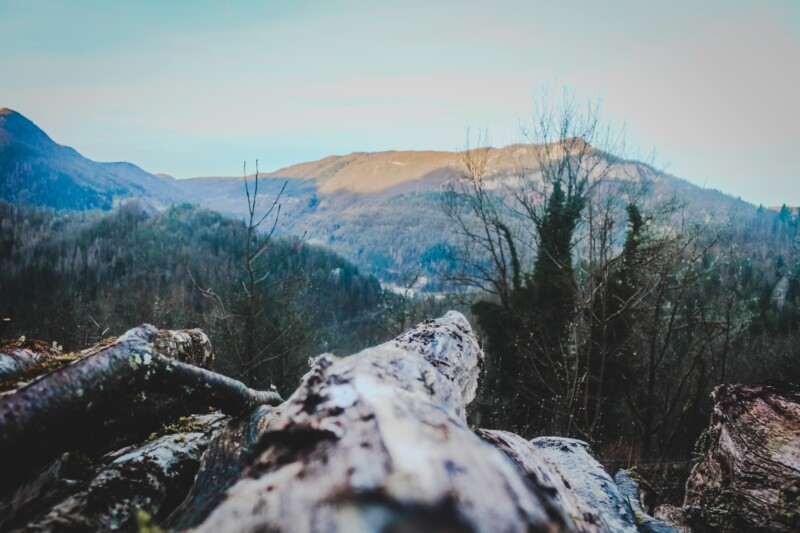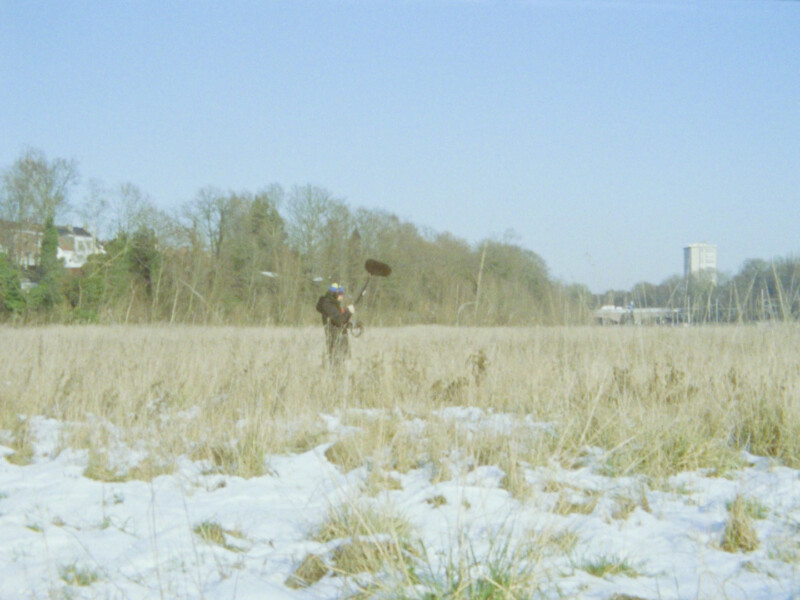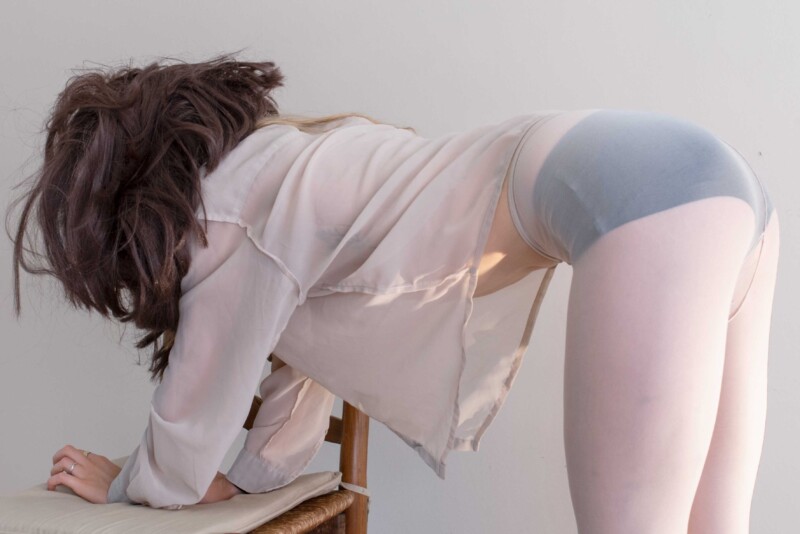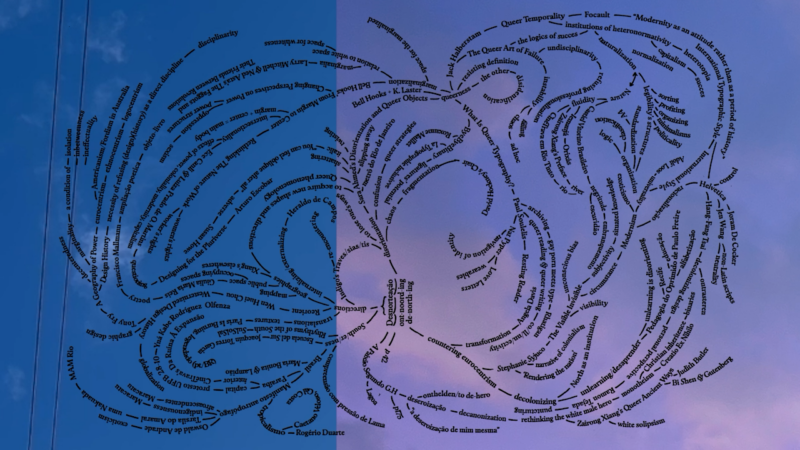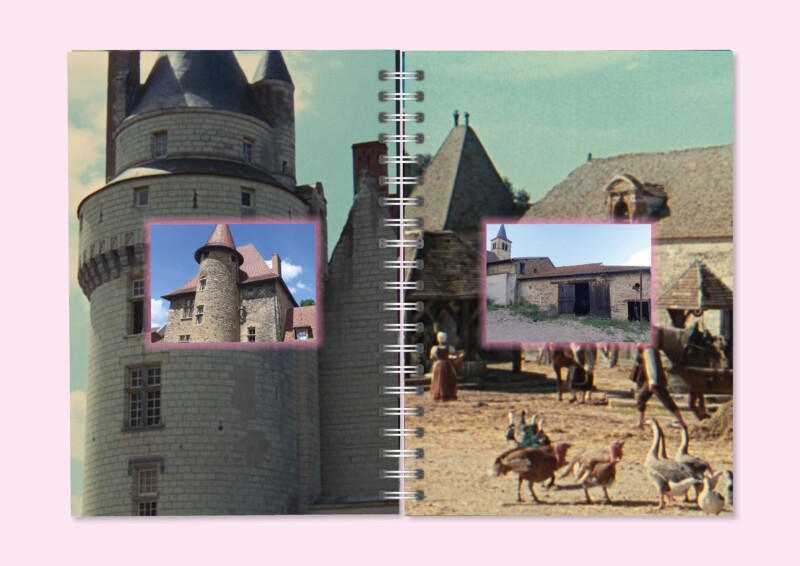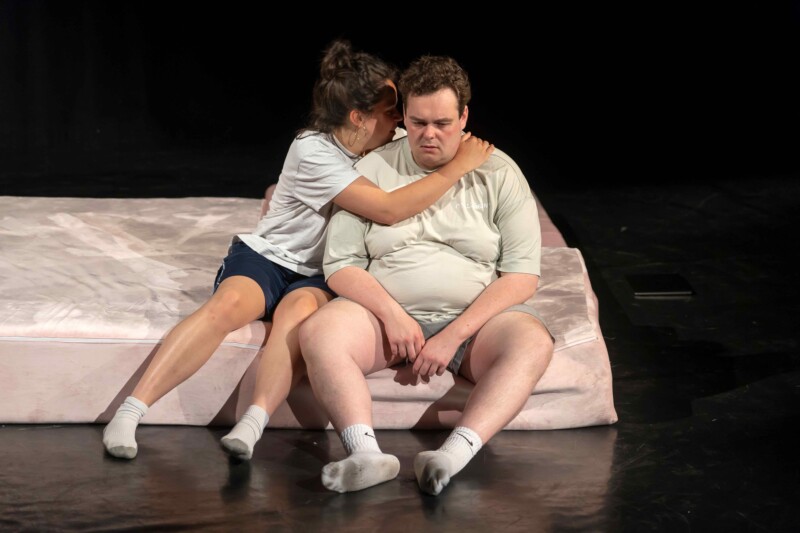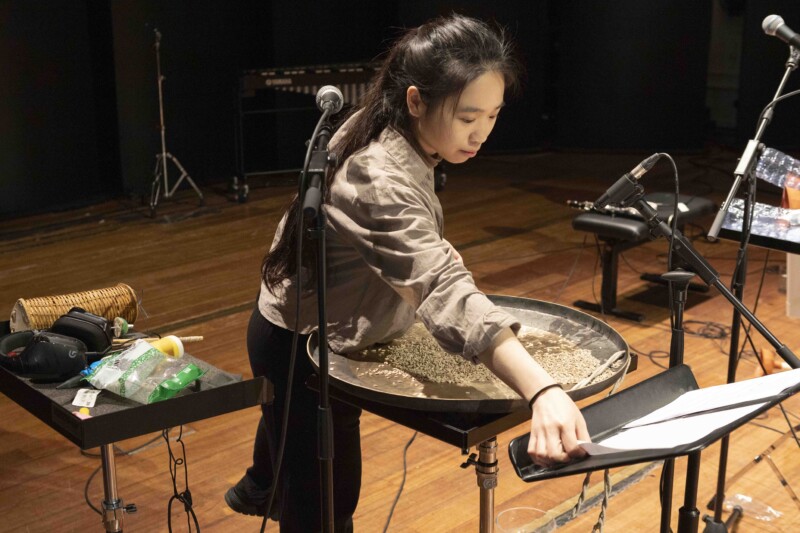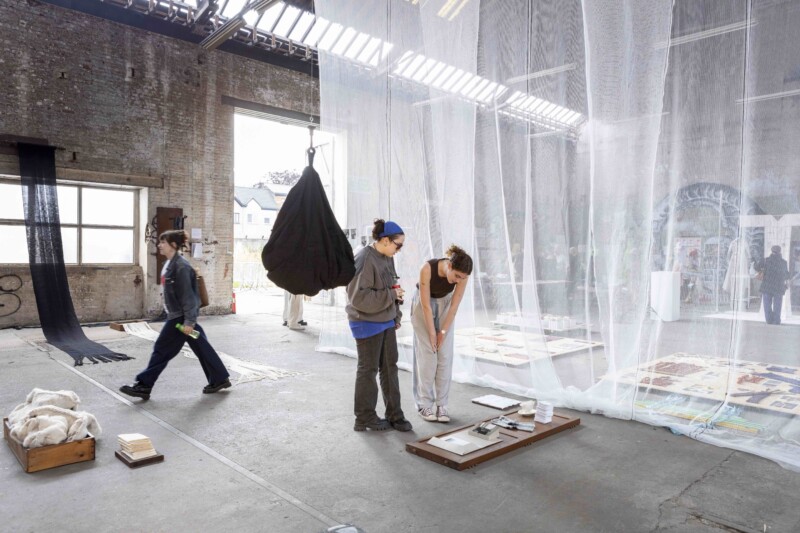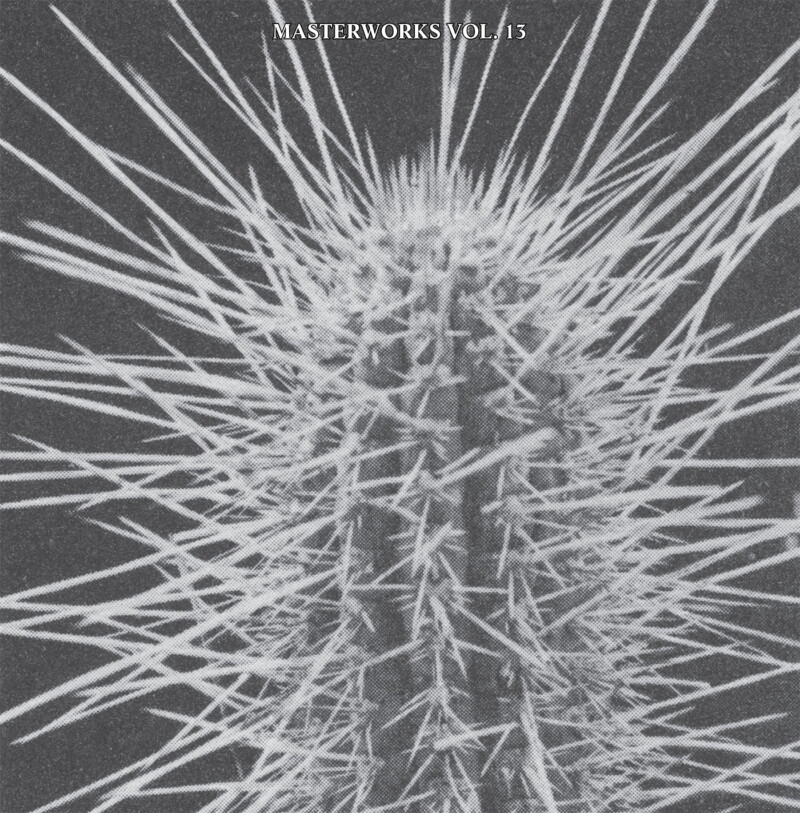“The unraveling of a torment: you have to begin somewhere”
An exchange of thoughts between Eva Jacobs, Jana Coorevits, and others. Eva opens the conversation using the words of others, Jana picks up the thread while looking at Eva’s work.
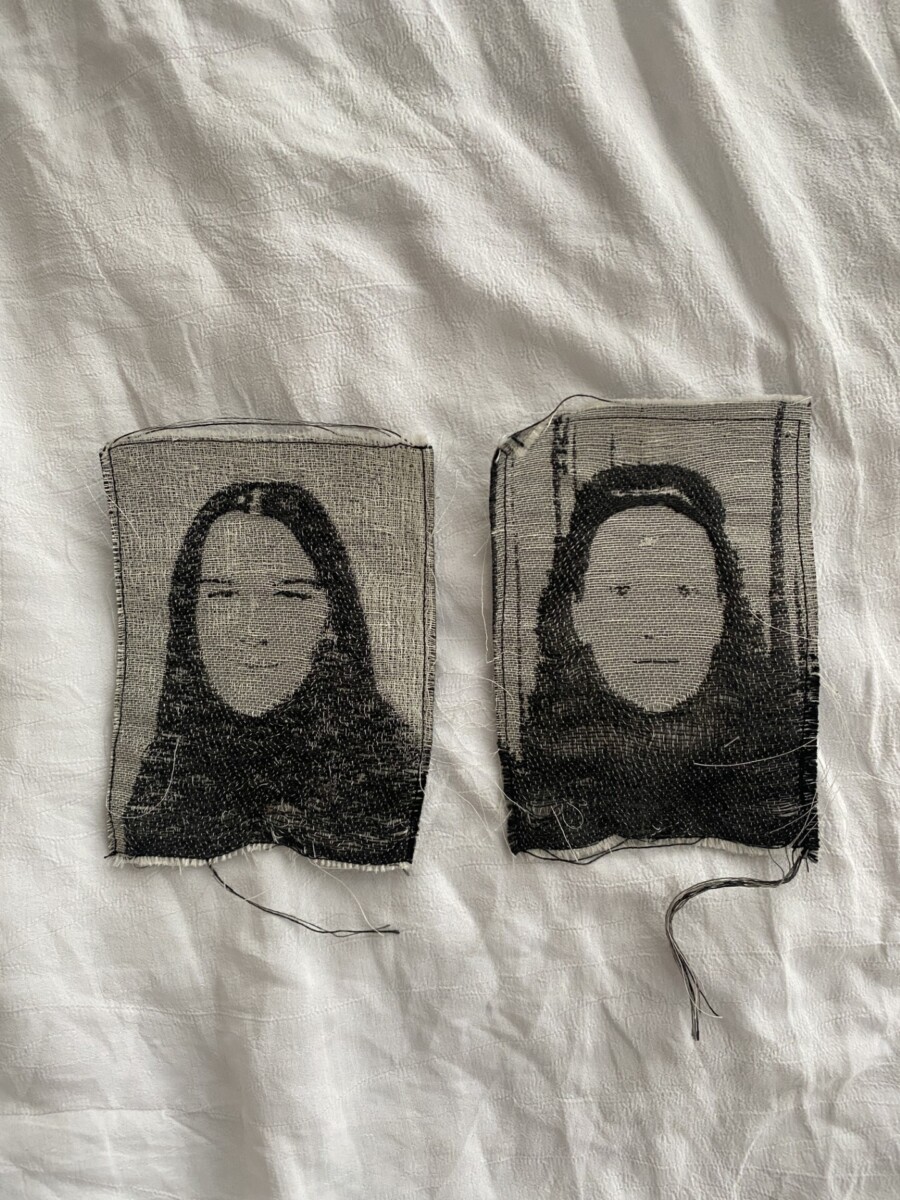
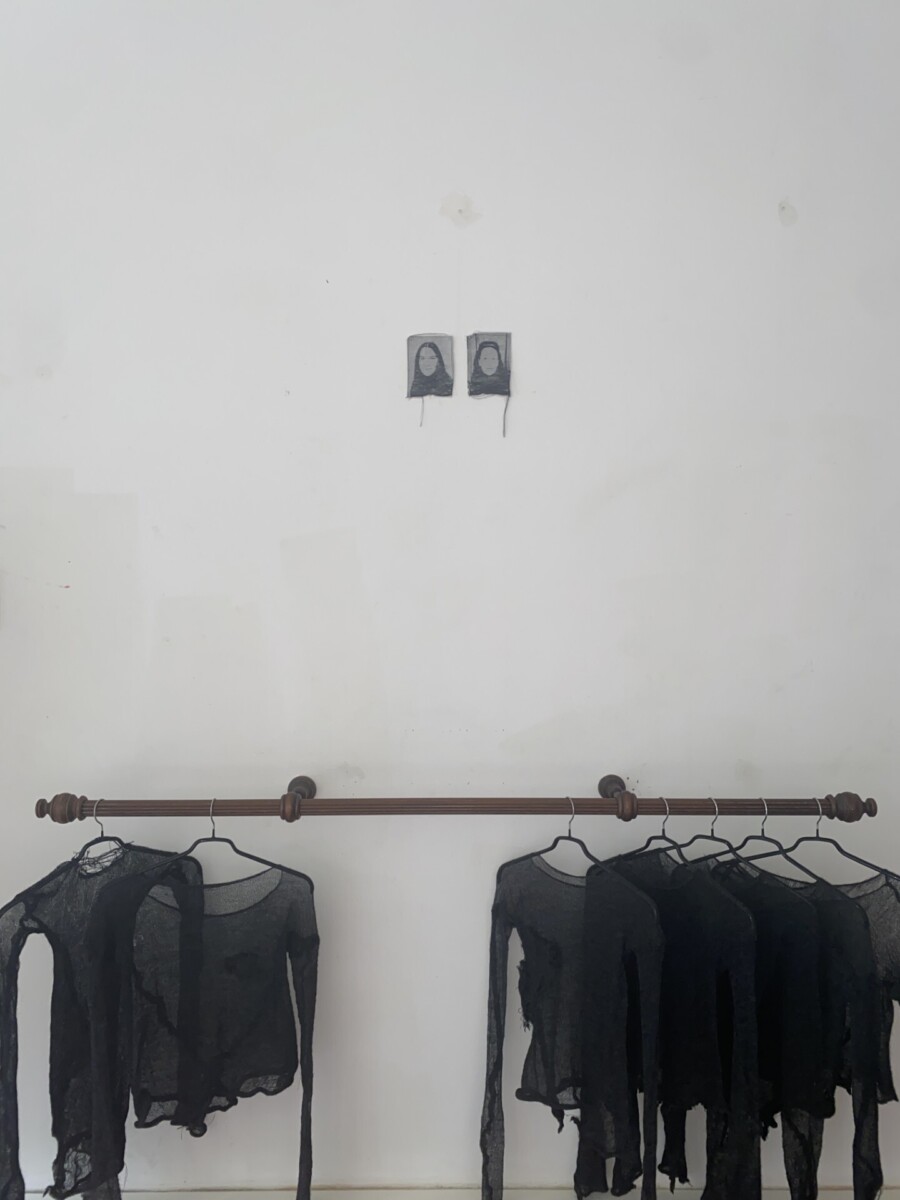
“The unraveling of a torment: you have to begin somewhere:
the colour blue, the damage is repairable,” wrote Louise Bourgeois.
“Here is the beginning of necessary violence,” responds Kathy Acker.
Jana Coorevits
“The damage is repairable” – I think of your frayed black jumpers. The woven photograph of your mother hanging above them moved me. What affected me most was the act of weaving itself: slowly and carefully building an image, undertaking a journey with a photographic image, and in doing so, giving it new meaning.
Your mother’s gaze was once directed at the camera. Yet during the weaving process, as you reinterpreted the photographic image, her gaze gradually shifted towards you. You look at each other. For me, this dialogue or connection is created through the action you take in making your image.
“I was once foolish enough to believe knowledge would clarify, but some things are so gauzed between layers of syntax and semantics, behind days and hours, names forgotten, salvaged and shed, that simply knowing the wound exists does nothing to reveal it.” (Ocean Vuong)
When I look at your work, it feels as though I gain access to a mental landscape, where images aren’t formed through language and thought. Is weaving for you a way of revealing?
Every thread I wove began to introduce itself to me as a new part of my mother that I needed to identify and acknowledge. It was as if, through this process, I was attempting to unfold her existence. By weaving the threads into a new, ordered pattern, I felt like I was indeed revealing her. As though this was my way of getting to know her better and giving her a more comfortable place in my life.
Unravelling my mother’s mannerisms to their deepest depths turned out to be an impossible task. Yet, for a brief moment, I thought I could manage it. Slowly, weaving became a journey into the wilderness that my mother represents.
Weaving meant confronting her. Only on days when I was filled with pride could I do this without debris. The woven pieces formed into physical and silent testimonies of a grieving process. Each piece now presents itself as a portrait of my mother, censored by my own gaze. It’s impossible to capture her without myself, let alone understand her.
“There is a process of self-censorship, perhaps unconscious, of what should be spoken and what remains unsaid, what should be seen and what is left for interpretation,” says Iman Mersal in the book How to Mend: Motherhood and Its Ghosts.
Weaving became my language of processing. In that sense, weaving was emotionally heavy. I had to begin by looking my mother in the eye. Naming our relationship with the right words. Picking at hardened scabs. Unravelling mended jumpers. Accepting the damage and hemming it in. This, it turns out, is the real task.
“How do other mothers appear to their children? What is it you see, or don’t see, in a picture of a mother who belongs to you?” This is the question Mersal asks herself. It’s a question that lingers steadfastly in my mind. “How do mothers appear to their children?”
My mother looks at me straight and piercingly in the face.
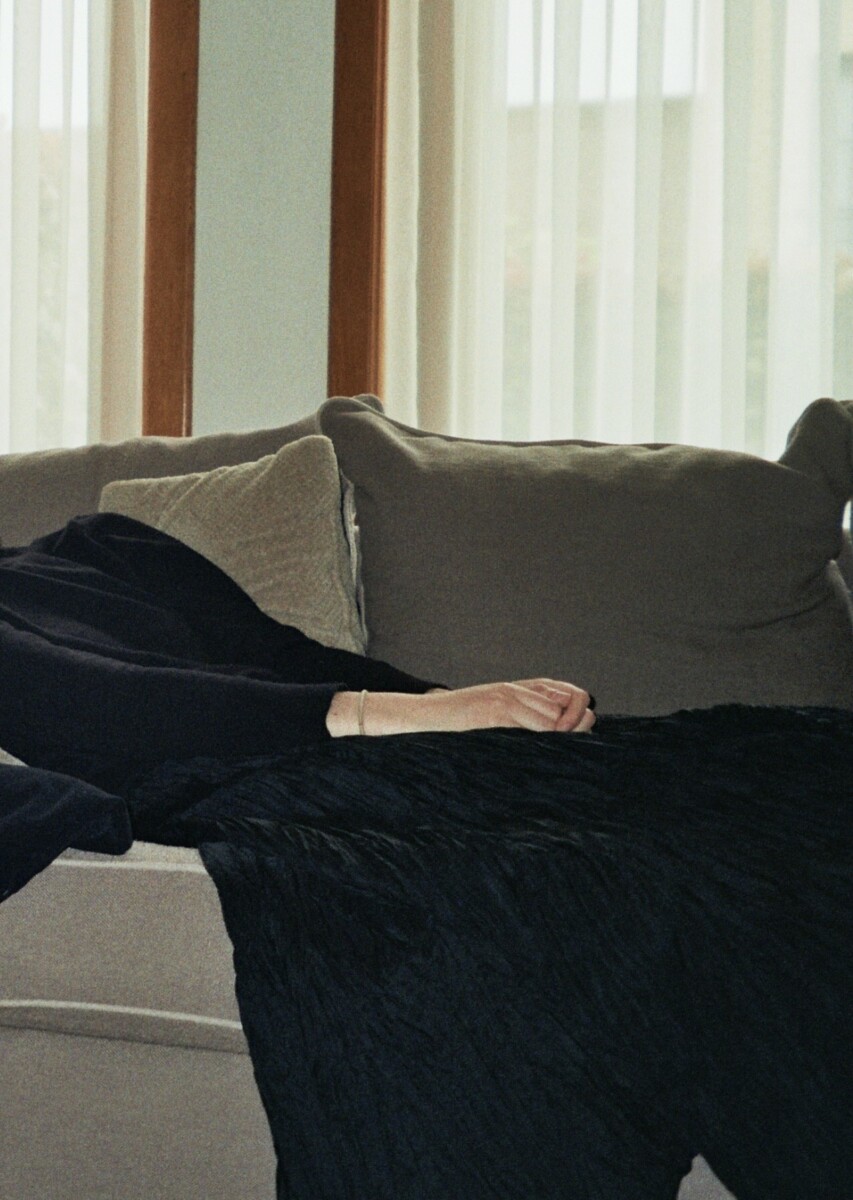
JC
“Today I’m wearing my mother’s shirt.
Today I’m wearing my mother’s dress.
Today I’m wearing my grandmother’s scarf.”
In a journal, you document how you wear your mother’s and grandmother’s clothes for a while. After your grandmother’s passing, you spend four days in her house, wearing her clothes and lying in the same positions she often assumed during your conversations. You place the camera where you once sat during those talks.
In response to the question, “How do mothers appear to their children?” you seem to be formulating an answer through a game of gazes, where you embody one of the threecharacters in your story. You not only explore how it feels to receive their gaze, standing in their shoes and wearing their clothes, but also how it feels to observe them from a distance, with a medium (photography, weaving) acting as a buffer. Whether you are looking at them or at yourself becomes blurred; you merge into a single body.
InWhat I Loved, Siri Hustvedt writes: “The world passes through us – food, books, pictures, other people. (…) ‘Mixing’ is a key term. It explains what people rarely talk about, because we define ourselves as isolated, closed bodies who bump up against each other but stay shut. Descartes is wrong. It isn’t: I think therefore I am. It’s: I am because you are.”This merging becomes tangible in your work. When I look at the image above, I don’t just think of you and your grandmother, but of all the mother-daughter relationships that came before. Of the conversations that could or couldn’t take place, and how each story leaves out as much as it reveals.
“Tell me about despair, yours, and I will tell you mine. Meanwhile the world goes on.” (Mary Oliver)
I hear Jacques Douai singing:
“File la laine. Filent les jours. Garde ma peine et mon amour.”text: Jana Coorevits, visual artist























